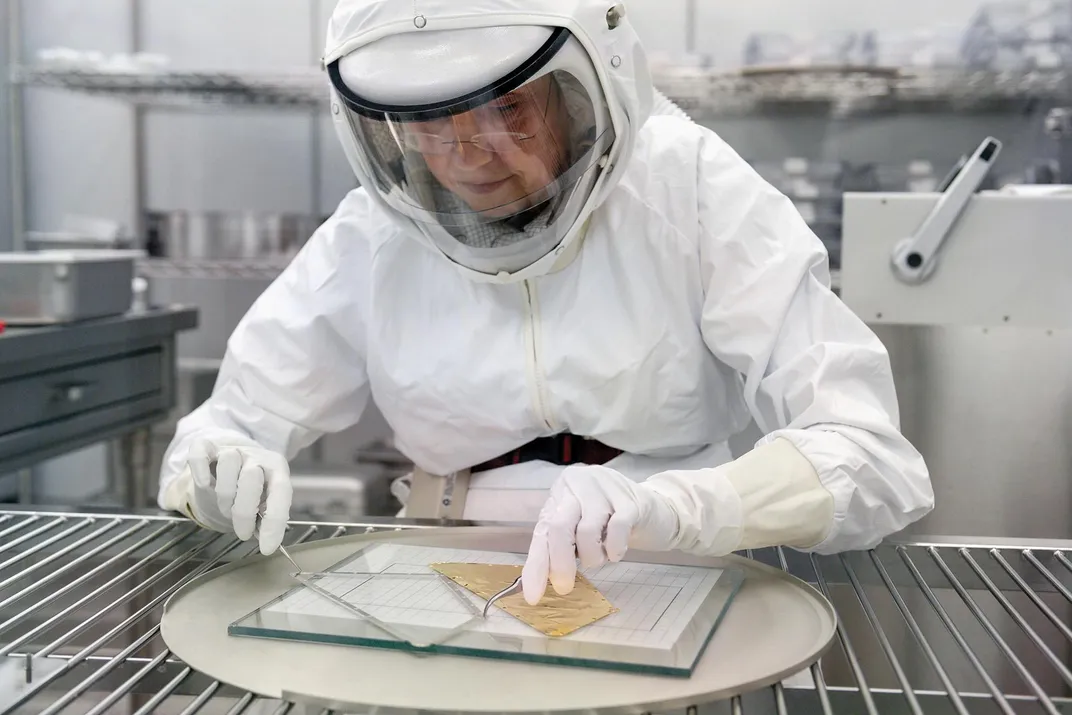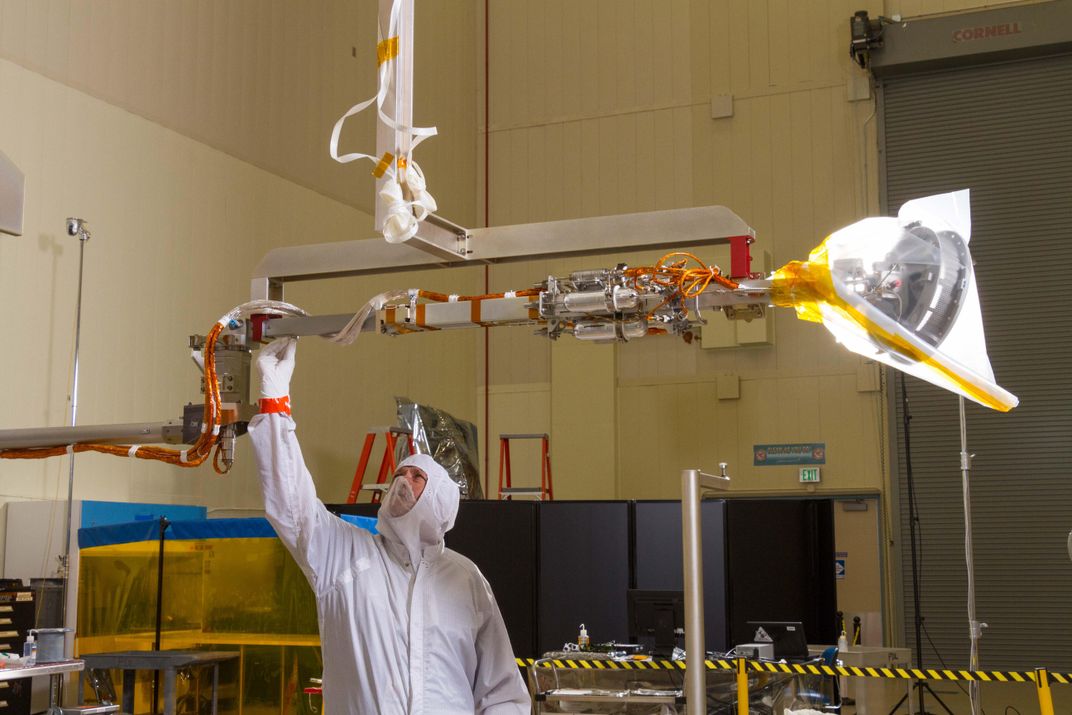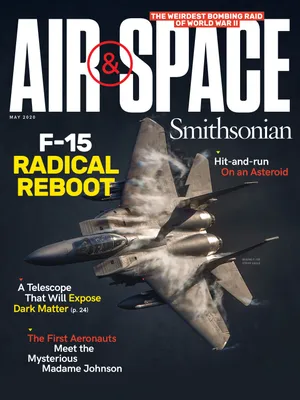NASA Is About to Grab an Asteroid Sample and Bring it Home
The Osiris-Rex spacecraft is on its way to fetch souvenirs from the birth of the solar system.
:focal(507x443:508x444)/https://tf-cmsv2-smithsonianmag-media.s3.amazonaws.com/filer/0c/b5/0cb5db21-5a15-4b92-9100-0c9e7ab4ecb8/bennu_1024.png)
A typical spacecraft, when it arrives someplace in our solar system, comes in hot. Screaming through the void at thousands of miles per hour, an orbiter or lander begins slowing down after rocket thrusters fire, parachutes and sky-cranes unfurl, and landing legs and airbags deploy. Despite meticulous planning, there is little elegance in all of this. A robotic explorer is rarely designed to hit an exact target: The best-planned missions aim for somewhere in an area the size of a small city. Space exploration generally involves a lot of large objects moving quickly and arriving loudly and messily.
None of this, however, will be true for Osiris-Rex. This spacecraft’s mission is to catch up with an ancient space rock 175,000,000 miles away and retrieve a piece of it for scientists to study on Earth.
Thrusters will fire, sure. But Osiris-Rex is nothing like any of its predecessors. Whereas the average space probe is a cruise ship sailing through vast waters, Osiris-Rex is a kayak negotiating boulder-choked rapids. Where the typical spacecraft moves with an elephant’s deliberation and pace, Osiris-Rex is like a hummingbird, touching its target ever so briefly before flitting away.

In late August, Osiris-Rex will sample an asteroid named Bennu, a coal-colored chunk of rock left over from the birth of the sun and so constituting the raw ingredients of everything in the solar system—including us. Osiris-Rex—the name stands for Origins, Spectral Interpretation, Resource Identification, Security, and Regolith Explorer—entered orbit around Bennu more than a year ago, and has patiently been gathering information ever since.
When the time is right, the spacecraft will point itself at the rock’s dark surface and descend. When it is a few feet from Bennu’s face, Osiris-Rex will spit out a stream of gas, stirring up a bloom of dust and rocks to capture and tote home. By studying this material, scientists will try to grasp how a cloud of diffuse gas at the dawn of the solar system evolved into the sun, its coterie of planets and moons, and a single blue-green world full of life.
“It addresses key questions that humanity asks itself: Where did we come from? What is our destiny? And also, are we alone in the universe?” says Dante Lauretta, the mission’s principal investigator and primary shepherd.
But to answer such questions, Osiris-Rex must become the most precisely controlled, most daring spacecraft in history. When the Curiosity rover landed on Mars in 2012, engineers generously gave it a 54-square-mile landing ellipse, roughly the size of San Francisco. Osiris-Rex, on the other hand, will touch Bennu within 270 square feet, about the size of an automobile parking space.
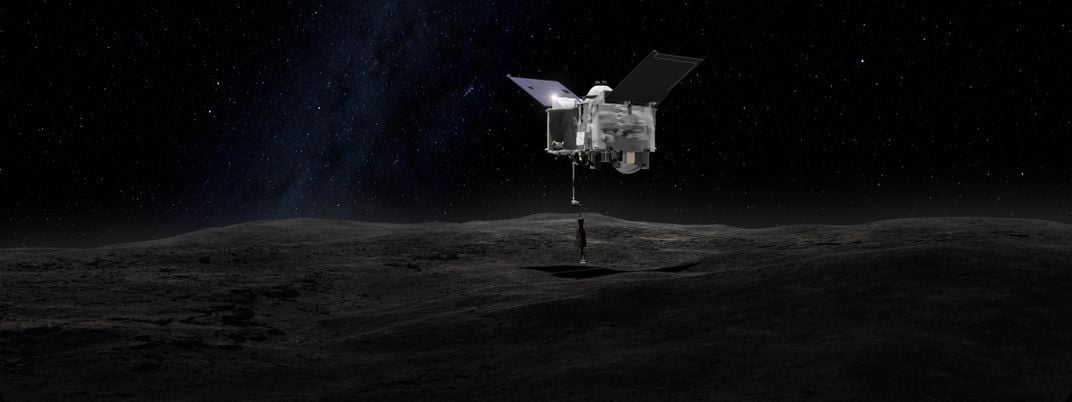
With its precision and purpose, Osiris-Rex marks a new era of planetary exploration. After decades of launching bulky, well-equipped orbiters, landers, and rovers, NASA is creating a new generation of agile planetary explorers built to collect samples and return them to Earth. The Osiris-Rex team wants to prove that although scientists can do amazing things from a distance using cameras and lasers, to truly understand where we come from, there’s nothing like the real thing.
Scientists hope their choice of Bennu as an object to sample will prove wise. Quite simply, Bennu is a relic of our solar system’s creation. When the sun formed, remnant dust and gas around it began to coalesce into larger objects and eventually planets, but Bennu was destined to remain small. Asteroids like it are mostly unchanged from that primordial sea of material. Their interiors might contain complex organic molecules, including amino acids, which make up proteins, and the nucleic acids that make up DNA and RNA—the molecular blueprints of life.
In addition to its potentially mystery-solving chemical composition, Bennu has the added advantage of being relatively close to Earth. (In fact, the asteroid has a one-in-2,700 chance of colliding with Earth in the late 22nd century, sometime between the years 2175 and 2199.)
Stationed in the asteroid belt, Bennu circles the sun, completing an orbit every 436 days. The asteroid is about one third of a mile wide at its widest point, only slightly wider than the Empire State Building is tall. (By comparison, the moon has a radius of 1,079 miles.) Bennu is dark and cools off quickly after moving away from the sun. These details suggest that its surface regolith is crumbly and coarse, like beach sand—material that should be relatively easy to scoop.
Osiris-Rex will not land on Bennu to collect the sample; instead the spacecraft will do a touch-and-go, a maneuver the team refers to simply as “TAG.” As it creeps toward the asteroid’s surface, moving at a glacial four inches per second, the spacecraft’s 11-foot arm will reach down and open a canister of nitrogen gas, blowing dust and small rocks up from Bennu’s surface. The spray will last between five and 10 seconds. Then a sophisticated net on the end of the spacecraft arm will trap the scattered material. NASA is aiming for at least two ounces of Bennu bits, and hoping for as much as 4.4 pounds, mostly sand and small pebbles. Sample in hand, Osiris-Rex will slowly back away, run some tests, and fly home.
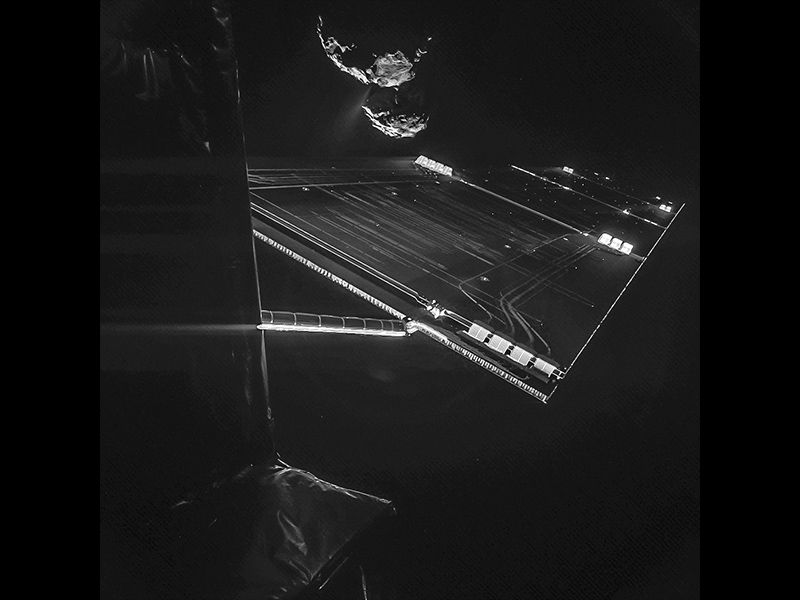
The spacecraft arrived in Bennu’s orbit on December 31, 2018, in preparation for a sample collection this summer. Once the spacecraft was in orbit, mission managers scrutinized the detailed images it transmitted of the asteroid then commanded the spacecraft to look closer. The team expected to find a lot of sand, maybe strewn with a boulder or two on the order of 33 feet across. They were shocked by what they saw. There was no sand. There were no beaches. There were only boulders—hundreds of them—each a potential menace. I told Lauretta the asteroid seemed to have more interesting features than anticipated. “ ‘Interesting’ is one way of putting it,” he replied drily.
“Bennu is not cooperating,” says University of Arizona-based Heather Enos, who is the mission’s deputy principal investigator. So the team—scattered across the country at the University of Arizona, NASA, Arizona State University, and a few other institutions—figured Osiris-Rex would have to be the compliant one.
They decided to start where every explorer begins: with a really good map. As Osiris-Rex photographs Bennu’s surface, it catalogs everything it sees, using instruments such as laser altimeters and spectrometers. Mapping the positions and depths of certain minerals enables scientists to determine the asteroid’s composition, explains Vicky Hamilton, who leads the spectral analysis team at the Southwest Research Institute in Boulder, Colorado. On January 21, Osiris-Rex made its closest pass above scientists’ preferred landing site and captured detailed images. In March, it will fly close enough to distinguish surface characteristics from other physical features of the rocks.
“We are not yet at the stage of being able to say, ‘There is 37 percent of mineral X in this location,’ ” says Hamilton. But the team is getting a clearer picture of Bennu. Initial results show that the asteroid is saturated with phyllosilicates, minerals that form only via interactions with water. Bennu likely had loads of water early in its history (some since lost to space and some locked away in its rocks), and when the samples are returned, scientists can discern what type of water and when it existed.
While Osiris-Rex continues to circle Bennu, every rock is recorded, down to objects measuring two inches across—about the size of an Oreo cookie. “This feature tracking has not been used in planetary exploration in this way before,” says Enos.
Last year, using the catalog of Bennu’s surface objects, managers began evaluating sites that seemed safe enough for Osiris-Rex to sample without being damaged by rough terrain. While the probe’s advanced map is being assembled, the team is teaching themselves—and the spacecraft—how to be the nimblest flier in history.
Engineers had initially designed Osiris-Rex to land in an oval-shaped area with about a 25-meter radius. But to account for all the newly discovered boulders, the new radius can be no larger than five meters—and depending on the hazards at its sampling site, maybe no larger than three meters. That is 10 to 16 feet. Osiris-Rex itself is eight feet wide and 10 feet high, about the size of a UPS delivery truck.
“I wasn’t naive or thinking this mission wasn’t going to be hard,” says Enos. “But tagging is turning out to be a little harder than I anticipated. When you start to put it in perspective, and go out to a parking lot and look at a parking space—that’s the area in relative space we are trying to get something from. I mean, I can barely parallel park.”
Last summer, Enos chaired a committee tasked with finding a touch-and-go spot, and her team pored over Bennu data to start compiling possible sites. They started with a dozen and eliminated them round-robin style, ultimately winnowing the field to four: Sandpiper, Osprey, Kingfisher, and Nightingale (all waterfowl, like the Bennu-bird of ancient Egypt).
Everyone on the mission had a favorite site. “You tend to get biased pretty early on in the process, and it’s hard to convince yourselves to be open-minded and objective,” says Enos. “That’s part of my job, to keep everyone unbiased, but I also have to babysit myself.”
The scientists on the mission angled for the most interesting-looking areas, maybe with some hydrated minerals that could bear compounds related to the origin of life. But the engineers also wanted to protect Osiris-Rex from unnecessary hazards. Juggling those two requirements was one of the many things that worried Enos.
Last December, the team made a decision to direct the spacecraft to Nightingale, with Osprey as a backup. Nightingale is located within a 460-foot-wide crater filled with dark material, and images so far show that the crater is relatively smooth. The crater is thought to be fairly young, exposing fresh regolith that has not been worn by time. But it is not without its hazards: The crater sports a building-size boulder on its eastern rim, which could pose a hazard to the spacecraft as it backs away.
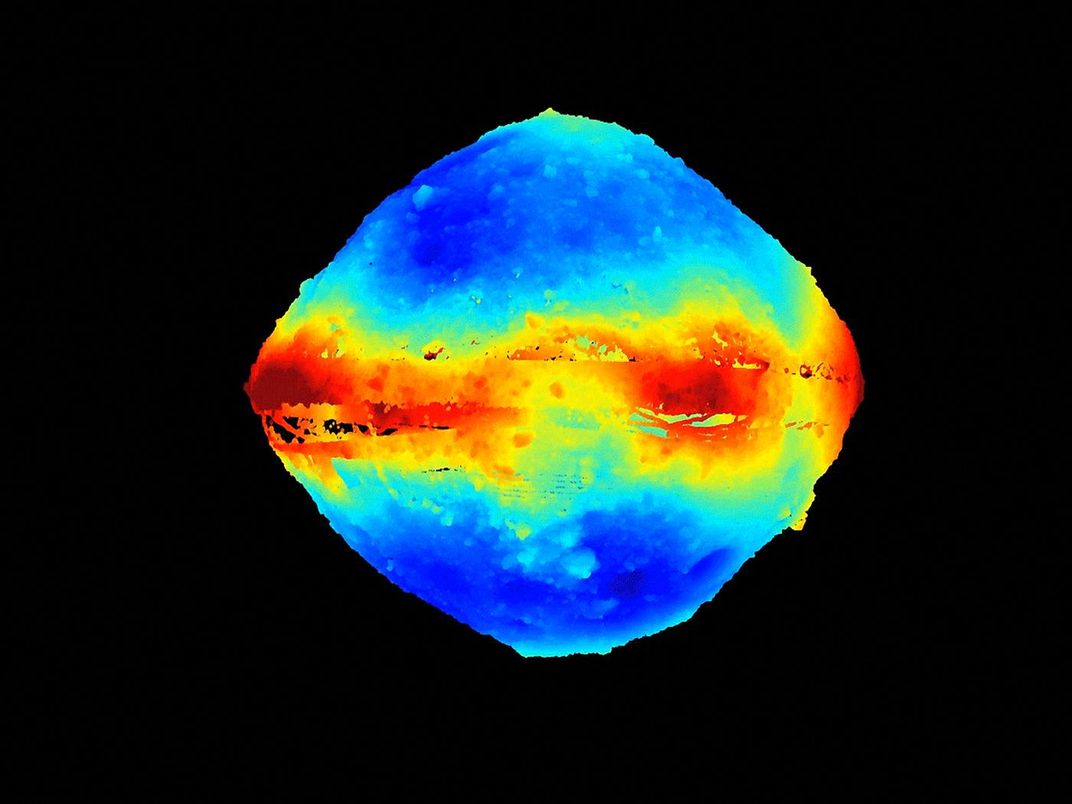
For the Osiris-Rex team, the planning and mapping were only the first parts of the mission. Now they have to ensure that the spacecraft can actually engage Bennu. A rendezvous with such a tiny object is in many ways much more difficult than interacting with an entire planet, according to Michael Moreau, flight dynamics system manager on the Osiris-Rex mission at NASA’s Goddard Space Flight Center.
Bennu’s gravity dominates the forces that act on Osiris-Rex, but it is so weak that it competes with other factors: the light and warmth of the sun and mysterious outflows of gas and dust from the asteroid. The mission’s navigators had to determine how much solar photons would jostle the spacecraft and account for that pressure.
“Bennu’s gravity is so small—that is where many of the challenges come in,” says Moreau. “You have this vehicle that is the size of a car, and you are trying to control it down to the millimeter.” Even a tiny change in the output of the probe’s rocket thrusters can have major effects: A nudge from Osiris-Rex can alter the asteroid’s surface features, rendering obsolete the lovingly curated mission map.
Mission planners have given Osiris-Rex a way to protect itself: The ability to say no. If the spacecraft sails close to Bennu and observes too many large, threatening rocks, it can back away and try again.
On the day of the TAG event—Touch and Go—Osiris-Rex will leave orbit, plunge toward Bennu, and start taking pictures like an eager tourist with a new Instagram filter. During the four-hour descent, the spacecraft should be able to take three new images, run them against its internal map, and make a decision on whether a safe landing is possible.
In principle, Osiris-Rex can do this approach and abort several times, and because it is so small and Bennu’s gravity so weak, exhausting the fuel supply is not much of a concern. But at a certain point, the team will grow frustrated and fatigued. “How many times can you abort before the team just says, ‘Let’s go!’ ” says Lauretta.
Sampling an asteroid is surely one of the most daring acts a spacecraft can attempt. Depending on what Osiris-Rex brings home, though, its feat might also rank among the most momentous. Bennu is a time capsule, one that could help scientists generations from now unravel the history of life and the question of human origins.
The samples from Bennu are so precious that they will get their own lab, currently under construction in the astromaterials research facility at NASA’s Johnson Space Center in Houston. The Bennu specimens will find a home down the hall from moon rocks collected by the Apollo astronauts.
We don’t see much of those types of rocks here on Earth, a planet that continually beats up and buries its rock. The earliest days of Earth are lost to time. A few momentary snapshots can be found within molecules of carbon or water, themselves locked inside shards of gemstone called zircons, which date to the Earth’s early youth. But most of the evidence of the solar system’s past, and therefore our own past, are obscured from view. Bennu holds some of it in trust.
Lauretta expects the asteroid to harbor hydrated minerals similar to those found in carbonaceous chondrites, the most common meteorites. These rocks interacted with water at some time in their history, and may contain clues about how Earth’s water came to be and why we have so much of it.
Studying asteroids is key to more than learning about our origins. Studying near-Earth asteroids, in particular, is also about studying our possible demise. While atmospheric carbon dioxide has been the primary driver of Earth’s five mass extinctions, there is one event that stands out among the fossil record. The non-bird dinosaurs winked out 65 million years ago because of a rock from space—one like Bennu (although larger).
As Osiris-Rex measures the asteroid, it will also monitor how it moves in space and how sunlight changes its trajectory, a phenomenon known as the Yarkovsky effect. Understanding how Bennu behaves can help future scientists learn how to push it—or another rock like it—away from a collision course with Earth.
Osiris-Rex data will inform NASA’s Double Asteroid Redirection Test (DART) mission, launching in 2021, which will nudge an asteroid moonlet. The test will help scientists determine whether crashing a spacecraft into an asteroid would be enough to push one away if necessary. (If only T-Rex had had Osiris-Rex.)
The tension between creation and destruction is what characterizes asteroid research, and Osiris-Rex is not the first spacecraft in the game. Other spacecraft have visited asteroids and comets, and even returned samples, though their caches pale in comparison to what Osiris-Rex could harvest. Osiris-Rex team members traveled to Japan to meet members of the Hayabusa teams, who successfully retrieved material from two asteroids in the past decade. The Japanese teams offered several lessons from their two target asteroids: Itokawa and Ryugu.
Itokawa is a stony, peanut-shaped asteroid without any hydrated minerals, with vast plains of gravel measuring in the centimeter-size range. “We were expecting ponds of that on Bennu,” says Lauretta.
Ryugu, by contrast, is more like Bennu, shaped like a spinning top with a dark surface. But Osiris-Rex was designed long before Hayabusa 2 collected a sample from Ryugu in February 2019—far too late to warn anyone of the surprises in store. Still, Osiris-Rex team members have learned from Hayabusa’s experience. The team was particularly surprised by how much Ryugu’s surface was disturbed when Hayabusa moved close, took a sample, and left. And the team is analyzing where fine, sandy material might be hiding on their own asteroid.
“It’s something about these spinning tops,” says Lauretta. “I’m not sure where all the fine-grained material is going. My idea is that it is falling in between the cracks in the interior of the asteroid. Beach is what we wanted, and pavement is more like what we got. But that’s why I think if we can just push some of that material aside, we can get to that finer stuff.”
Bennu had other surprises beyond its rocky surface. Shortly after Osiris-Rex arrived, orbiting about a mile above the surface, it detected a sparkly stream of particles emanating from the asteroid, resembling snow in the spacecraft’s viewfinders. Managers decided the particles did not pose a risk, but kept watching closely. Some of the particles escaped the asteroid’s weak gravity, but others launched into orbit, becoming short-lived moonlets before falling back to the surface. Osiris-Rex was the first spacecraft to observe such a phenomenon, and Lauretta called the plumes one of the biggest surprises of his scientific career. In December, the science team announced three possible causes for the plumes, which consist of rock fragments smaller than an inch across. They might form from meteoroid impacts, fracturing due to heat stress, water vapor release, or some combination of all three phenomena.
While Osiris-Rex navigates through puzzling plumes and spins like a windmill under the photon pressure of the sun, its managers on Earth are preparing themselves for the possibility that its first attempt to sample Bennu might fail. “In the event that we go for our first TAG attempt, and we do invoke a wave-off, I would rather people see that as a success, than us not being successful,” says Enos. “We are specifically building in that capability autonomously to react to these unknowns. Going to a location with such a small radius is really unprecedented. I do hope people appreciate that.”
The Osiris-Rex gamble is a new paradigm for NASA, and for space exploration more broadly. Risk is unavoidable—and with great risk comes great rewards—not just for this mission, but for all the ones to come.
